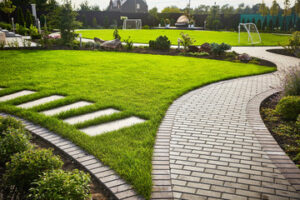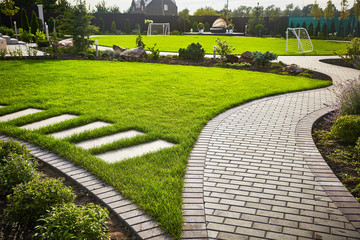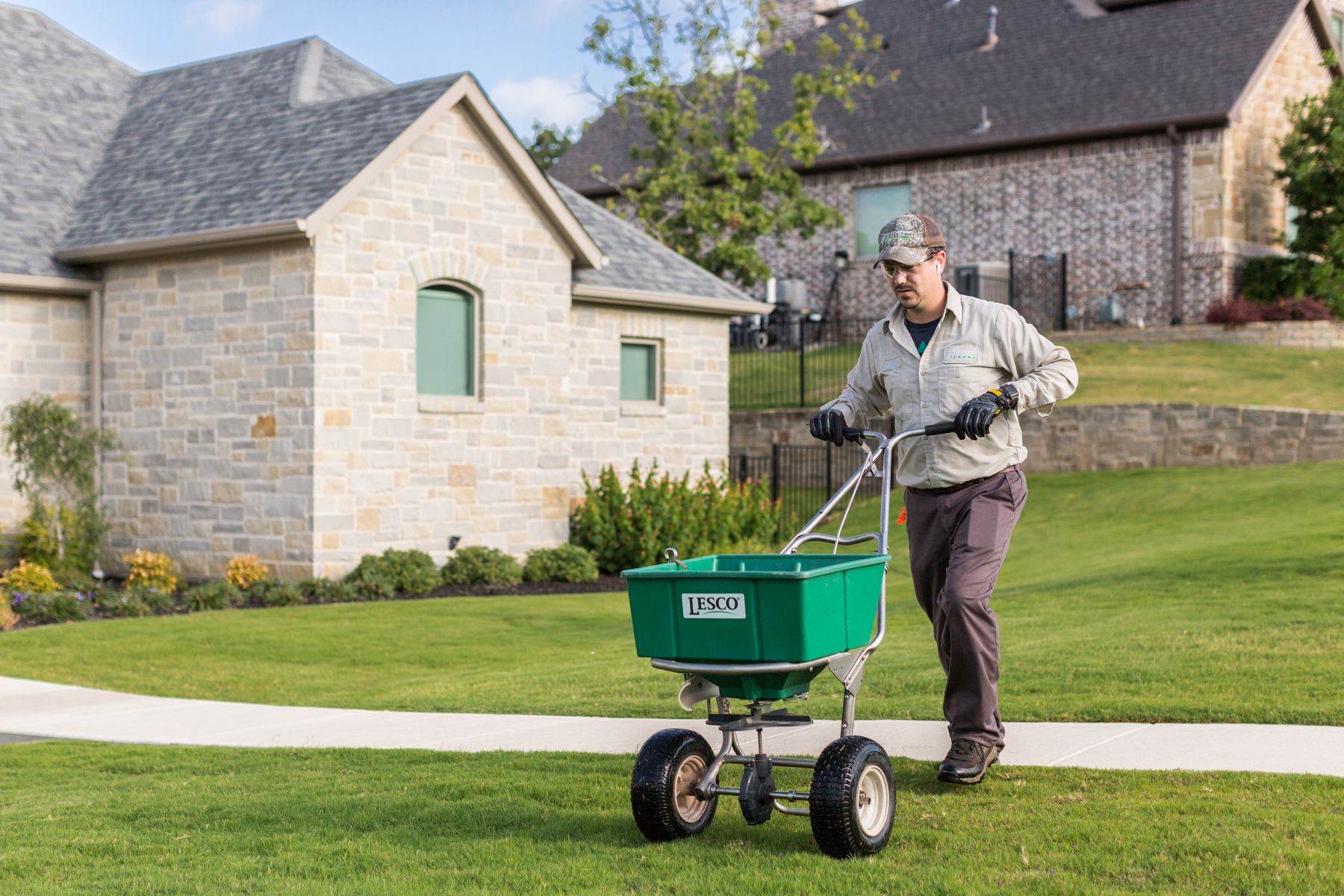Hardscapes Greensboro NC include walkways, patios, fire pits and other elements constructed of stones or concrete. They offer a beautiful way to define spaces in your yard, making it easier to move around and make full use of the space.
The right materials can add value, and provide years of enjoyment for family and guests. The type of material you choose depends on your desired functionality and the size of your landscape.
Hardscapes are non-living elements that offer definition and functionality to your landscape design. They are made from durable materials such as natural stone, brick, concrete, and wood and include structures like retaining walls, patios, walkways, driveways, and fire pits. Hardscapes also help in the flow and organization of your outdoor space by creating designated areas for various functions and activities.
Unlike softscapes, which require regular watering and trimming, hardscapes need minimal upkeep. This makes it easy for homeowners with busy schedules to enjoy their outdoor spaces without worrying about maintaining their gardens and lawns. Moreover, hardscapes are highly versatile and can be customized to suit different themes and styles.
Since they are built from strong and sturdy materials, hardscapes are able to withstand harsh weather conditions. This makes them a long-term investment for homeowners who are looking to add value to their property. Additionally, most hardscapes are low-maintenance and can be easily cleaned with a hose or pressure washer.
Choosing the right material for your hardscape project is critical to its longevity. Consider factors such as your local climate, usage levels, and maintenance level when making your decision. For example, while wood may look beautiful, it is not a good choice for areas that experience frequent rain showers or high traffic levels. In contrast, a hardscape made from natural stone is a more resilient option.
With a range of colors, textures, and finishes, Belgard offers a wide selection of pavers that can be used for various outdoor projects. This includes permeable pavers that are designed to improve drainage and reduce soil erosion, helping prevent flooding and property damage during rainstorms. These paving stones are a great alternative to traditional pavers as they also help to reduce the amount of pollutants that are carried back into lakes, rivers and oceans during rainfall.
When it comes to designing your hardscape, don’t forget to incorporate plants and trees in order to create a balanced landscape. Adding planters and garden beds is a simple way to introduce color and variety into your hardscape. They are also an excellent choice for incorporating more natural elements into your landscape, which can help increase your curb appeal and provide a sense of balance to your outdoor space.
Aesthetics
When paired with the right softscape elements, hardscapes can add both beauty and functionality to your landscape. As a broad category of non-living landscaping features, hardscapes include anything from patios and walkways to fire pits and water features. When professionally designed and constructed, these structures can transform outdoor spaces into engaging retreats.
A hardscape is made of inorganic materials, such as natural stone, tile, concrete pavers and brick, and contrasts with the organic elements of your garden, such as trees, grass and flowers. It can be used to build a variety of structures, including pathways, driveways, patios, fire pits, water features and even outdoor kitchens.
Paved pathways are essential components in many landscapes, allowing for easy navigation of a property. They can also create a sense of organization and design in gardens and yards that may be large or contain multiple distinct areas. These pathways can also prevent guests from trampling delicate plants or damaging the roots of shrubs and flowers.
When designing a hardscape, it is important to consider color and texture. Different types of stones, pavers and bricks will have unique colorings and textures that can impact the overall look of your garden or yard. Choose a few colors or textures that work well together and incorporate them into your design. A blend of colors and textures will help your hardscapes to complement the existing landscape and tie in with your home’s aesthetic.
Another way that hardscapes can improve the aesthetic of your space is by introducing a focal point. A water feature or a stunning stone wall can draw the eye and serve as a conversation piece for guests. It can also help to mask any unwanted noise from nearby streets or neighbors and create a tranquil atmosphere.
A well-designed and executed hardscape can increase the value of your home. It can also offer a year-round appeal that other features of your home cannot. A well-constructed patio, for example, can provide a comfortable place to relax in the spring and summer, while serving as a cozy gathering space in fall and winter.
Maintenance
Hardscapes add variety and contrast to your garden, making them a great addition to any landscaping design. They can be built from various materials, ranging from pavers to bricks and concrete. These materials are often crafted to complement your garden’s aesthetic and to fit into the overall design, making them the perfect choice for walkways, patios, fire pits, and more.
Adding hardscape features can reduce the amount of maintenance your landscape requires, allowing you to save time and money in the long run. This makes them a great option for busy families, those who want to minimize their yard’s upkeep, or those who wish to enjoy their outdoor space year round.
While hardscapes require less care than a lush lawn or garden, they do still need some attention to stay in good condition. This maintenance involves sweeping and cleaning, which helps to remove debris and prevent the buildup of moss and weeds. It also includes regular cleaning of stains and spills to mitigate discoloration.
Another aspect of hardscape maintenance is ensuring that they have adequate drainage. This is especially important in areas prone to flooding or heavy rains. Without proper drainage, hardscapes can become flooded and erode quickly. This can lead to problems such as wet rot, soil erosion, and damage to adjacent plants and trees.
With the help of a professional, hardscapes can be designed and constructed to meet your unique needs. They can be used to create a pathway that minimizes wear on your lawn, construct a patio that allows you to entertain in style, or build a retaining wall to add dimension to your property.
As a result, they can increase your property’s value by creating functional spaces that appeal to homebuyers. Many prospective homeowners prioritize low-maintenance landscapes when shopping for a new house, making hardscapes a smart investment that can pay off down the line. Additionally, the versatility of hardscapes makes them an attractive option for commercial properties. Whether you’re looking to repurpose your outdoor space or increase the curb appeal of your business, the professionals at Cutters Landscaping are ready to transform your property with our range of hardscaping services.
Home Value
Hardscapes can increase the value of your home, especially if they are a feature that is functional. For example, a step-stone walkway may look nice, but it also provides easy access to your home and can help to mask traffic noises. Water hardscapes like fountains, ponds, and stream beds are also aesthetically pleasing and provide the relaxing sound of running water, which many potential buyers enjoy.
Patios, fire pits and outdoor kitchens are also hardscape features that can increase a property’s value. However, it is important to keep in mind that the size and design of these features will have a major impact on the overall look and feel of your yard. For this reason, it is best to work with a landscape company when installing these features to ensure they are properly designed and executed.
It is also important to consider how your hardscapes will coordinate with your softscapes. The best landscape designs incorporate both hardscape and softscape elements into a cohesive whole that enhances the beauty of your property and increases the value of your home.
To do this, it is important to consider the materials used for your hardscapes and how they will blend in with the surrounding vegetation. For example, if you are using concrete pavers for your hardscape project, be sure to choose a color that matches or compliments the nearby plants. Batchelder & Collins carries several different colors of pavers, including arctic marble, autumn slate and butterscotch limestone, so you can find the perfect match for your hardscape project.
Another way to elevate your hardscape is by incorporating transitional elements into your design. These can include things like flower gardens, trees, shrubs and groundcovers that will help to blend your hardscape elements into the rest of your landscaping.
It is also important to remember that your hardscapes should be well-maintained in order to maintain their aesthetic and functional value. Regular cleaning, sealing and repairs will prevent deterioration and extend the life of your hardscapes. We at Groundhog Landscaping can provide you with the professional care and maintenance you need to protect your investment and maximize your home’s value. Contact us today to get started!

